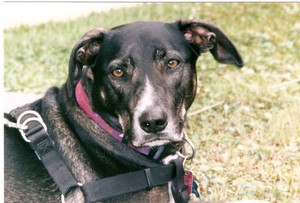Dogs are prone to growing strange lumps and bumps throughout their lives, but if the bump turns out to be a sebaceous cyst (also known as an epidermal inclusion cyst or a sebaceous gland adenoma), then there isn’t much to worry about as long as you keep monitoring it daily. It feels like a round or oval lump underneath the skin. The dog will pretty much ignore it and go on behaving as usual.
Sebaceous cysts also appear in people but they are not contagious. This writer happened to have a sebaceous cyst on her back at the same time her dog had one on her belly. The dog fared much better than the writer. My vet found the coincidence incredibly amusing.
What Causes Sebaceous Cysts?
If the word “sebaceous” sounds familiar, it’s probably because you heard a lot about sebaceous glands during your teenage years when you were battling pimples. The sebaceous glands are located in the skin and help secrete the oil that keeps skin supple. Although most dogs are covered with protective hair, they still need body oil to help with optimal skin maintenance.
Sebaceous glands can burst underneath the skin. It’s not entirely sure why, but may be due to injury or repeated pressure on one part of the body, such as from a collar. This bursting does not hurt. However, instead of oozing the body oil on the surface of the skin, it oozes it underneath the skin. This eventually becomes a foul-smelling substance that vaguely resembles cottage cheese. But you will only have to deal with this goop if the sebaceous cyst bursts.
Treatments
If it’s not bothering the dog, there’s no need to do anything about it immediately. Many dogs have the amazing power to reabsorb the body oil. The cyst will then get progressively smaller until one day it disappears entirely.
But if it suddenly grows very large in a few days, contact the vet. It may be sign of cancer or it may be about to burst. Although a burst cyst is a minor injury, you really do not want your dog to lick up that foul goop. Also, some sebaceous cysts in dogs get so large that they need to be closed with a stitch. If the vet suspects that the cyst may be cancer, then he or she will take a biopsy of the cysts with a needle and treatment proceeds from there.
Your vet will remove the cyst surgically in what is usually a short and uneventful operation. If your dog is about to undergo surgery for another procedure and has a growing cyst, your vet may suggest that the cyst be removed as long as the dog is anesthetized. Even if the dog is not anethetised, the vet may recommend putting the dog on a round of antibiotics beause of the chance of contaimninants getting into the broken cyst.
References:
Dog Owner’s Home Veterinary Handbook.” Debra M. Eldredge, DVM, et al. Howell Book House; 2007.
The Veterinarians’ Guide to Your Dog’s Symptoms.” Michael S. Garvey, DVM, et al. Chronicle Books; 1999.
Dog Channel.com. “Sebaceous Cyst.” http://www.dogchannel.com/dog-vet-library/coat/article_3772.aspx
Personal Experience


